Last month we looked at hands. This month we are looking at bits. Of course, the main thing that determines the severity and effectiveness of any bit is the hands that are using the rein.
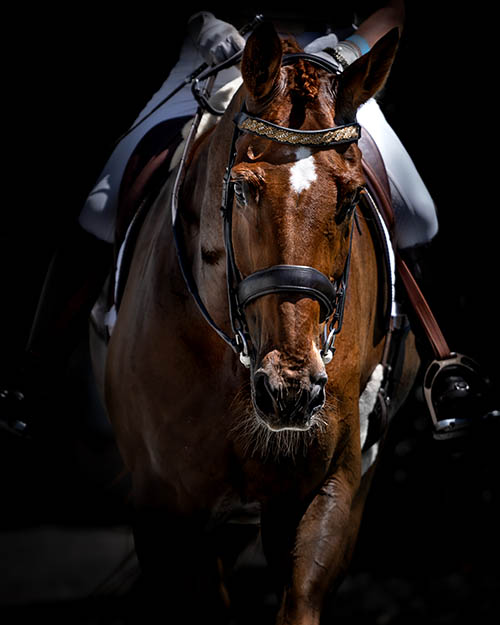
There is a huge range of bits available, which can be quite confusing, but there are a few first principles that can help you choose a suitable bit for your horse. This article seeks to explain the fundamentals, so you can evaluate the different bits available and work out what best suits your horse.
Whether you are training racehorses, dressage horses or leisure horses, the main strategy we use is the application of pressure – and when the horse does what we want by yielding to the pressure, we release the pressure. This Pressure/Release training is also called negative reinforcement, because we take something away to reinforce the correct response, and to therefore teach the horse what we want. We can put pressure on with our legs, with our hands via the reins and the bit, or we can use our core muscles or aids such as the whip.
The most skilled riders are able to use light aids (pressure) with exquisite timing to help the horse understand what is wanted. Bits are simply a way of applying pressure so that we can remove the pressure (release) when we get the response we want. If we want the horse to stop from a rein aid, we put pressure on the rein; and when he slows down, we ease the pressure to teach him to yield to it.
So, a bit is really just a means of applying pressure so that we can get a reaction and release the pressure. There are essentially three types of bits defined by where pressure is applied:
SNAFFLE BITS
Snaffle bits apply pressure mainly on the corners of the lips. They are the simplest. They have a ring that the cheekpiece and the rein attach to, and a mouthpiece that may have a joint, or two joints. The mouthpiece may have a solid, usually curved, mouth, or be made of a flexible material. In general, the fatter the mouthpiece the larger area the pressure is distributed over – hence the gentler the bit. A bit with two joints and a smooth, central lozenge will be gentler, as there is not the nutcracker action of the single-jointed bit, which can squeeze the sides of the horse’s mouth if pulled hard. There are now an unlimited number of variations of rings and mouthpieces.
Eggbutt snaffles have a smooth side on the ring to avoid pinching, in contrast to the basic loose ring bit.
D-ring bits have a straight side in the ring, which can give better turning and less risk of a bit pulling through the mouth. FM bits have a longer sidepiece with can be tethered to the bridle’s cheekpiece to help hold the bit up in the mouth, which can be helpful for the horse with a busy mouth.

The Baucher (hanging snaffle) has an arm that the cheekpiece connects to, stopping the bit from falling down into the mouth as far as a regular snaffle. This is great for young horses or horses that may get the tongue over the bit. I especially like this bit when introducing a bit to untrained horses.
The French snaffle (now often known as KK, for dressage rider Kyra Kyrkland) has two joints with a round lozenge. There are now developments to give more stability such as lozenges that lock, or lozenges that move, encouraging tongue movement.
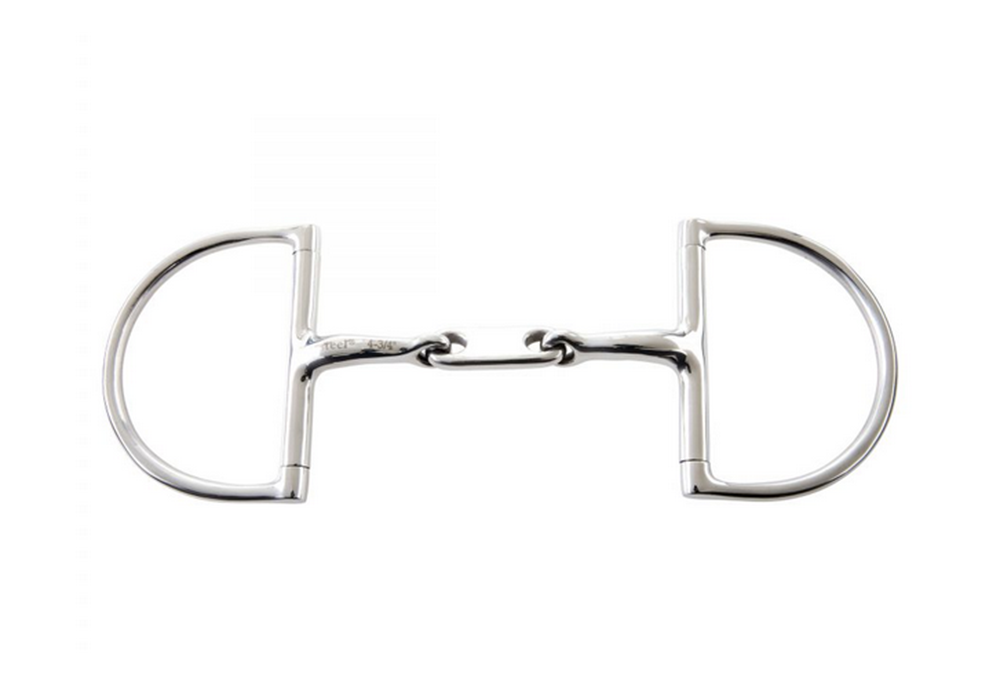
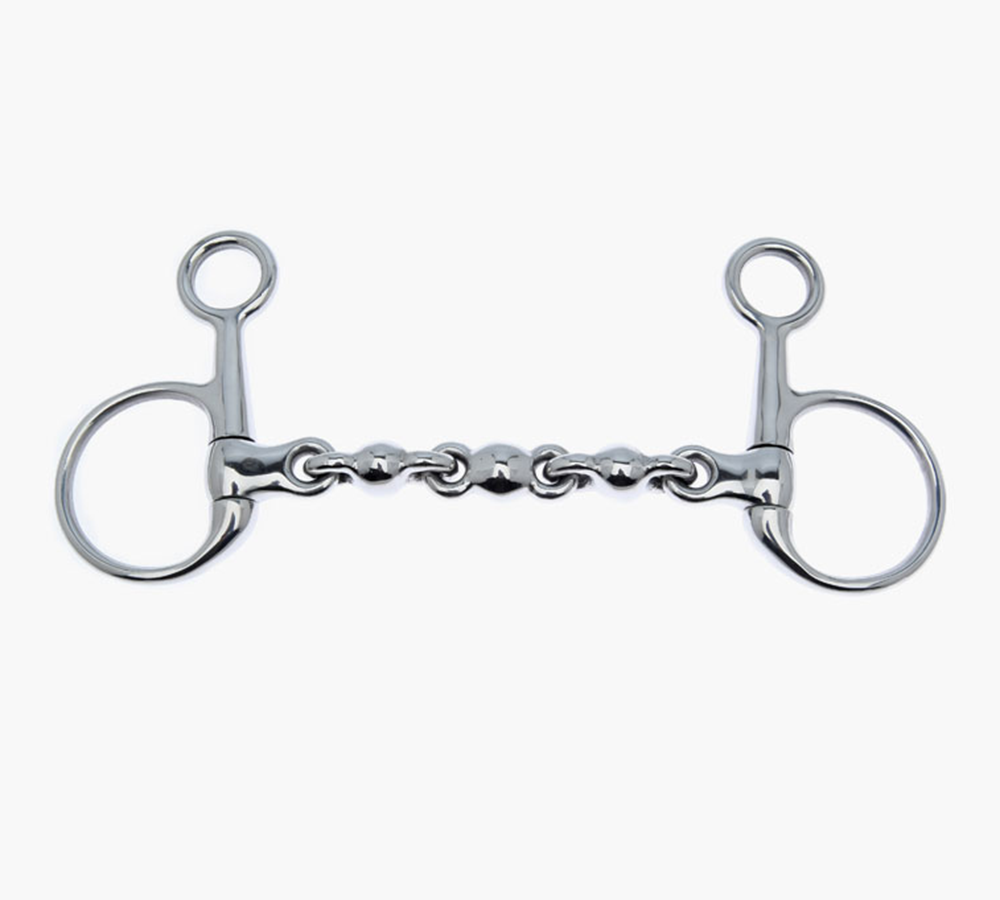
“It all depends on how
the rider uses the bit.”
Dr Bristol also has two joints, but the plate is flat and puts pressure on the tongue, so is considered potentially quite severe. It may look like a soft French snaffle to inexperienced eyes but has a very different effect.
Waterford has several joints. Although this can be severe, some horses are really happy in this.
Most manufacturers also make flexible plastic bits with a cable core. Do not buy cheap versions of these bits as they have been known to break. Generally, these are best for horses that are naturally responsive to the bit. Sometimes we want a horse to take a more positive contact with the bit; not exactly leaning on the bit, but seeking the contact. A soft plastic mouthpiece or a fat alloy mouthpiece may be helpful.
Verbindend is a modern design with curved bars and a double joint, which is effective in discouraging leaning on the bit. This is another subtle difference that makes a big difference in the response to the bit.

The mouthpiece may be made of an alloy containing copper, said to make the mouth moist. There are bits with copper rollers that are a little sharper than a plain mouthpiece, but sometimes accepted very well by a horse that wants to play with the bit with his tongue. Twisted mouthpiece bits also discourage leaning on the bit. The ‘W’ bit has two mouthpieces of different lengths, and is one of the sharpest of the snaffles; not very popular today when there are such a lot of options.
These last few “more severe” snaffles I find can be helpful to use for a short time to help a horse make an adjustment and understand what you want. You may not want to use them all the time. These bits are naturally sharper than the traditional fat snaffle, but if the horse accepts the bit readily and responds to a lighter aid, then the sharper bit may in fact be used more softly than the gentler bit. It all depends on how the rider uses the bit, that is, on the softness of the hands.
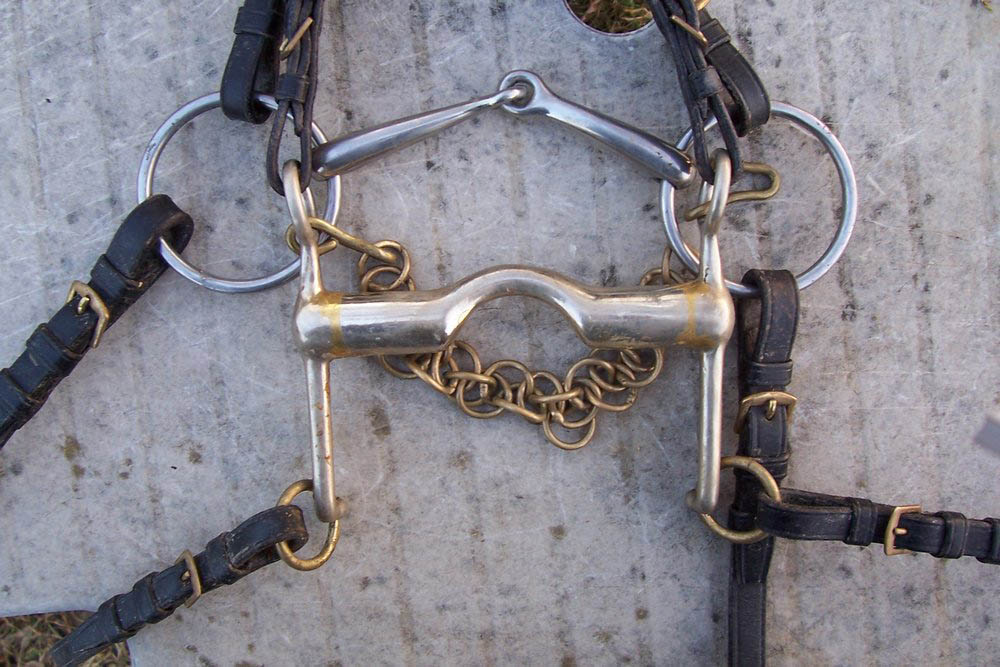
CURB BITS
Curb bits apply pressure to the bars of the mouth, the chin and also to the poll. The pressure in these places is more likely to result in the horse putting his head down, and sometimes he will bring his nose in towards his chest. The rein attaches to a lever, called the shank. The longer the shank, the more leverage, and the more severe the bit – unless the shank curves backwards as it does in many western bits, taking away the leverage. The bridle cheekpiece of course connects to a different ring. The ratio of the length above the mouthpiece (called the purchase, or upper cheek bar) to the length of the shank below the mouthpiece also determines the amount of pressure that can be applied. A long shank and a short upper cheek will have a high ratio and be more severe.
It is extremely important that these bits are fitted correctly and that the chain is fitted correctly. A tighter chain will make the bit work faster, but a too loose chain will allow the bit to roll over and can result in excessive pressure on the tongue, which is not desirable. I like to use a lip strap to stabilise the chain and prevent it from falling off and getting lost.
The curb is often matched with a snaffle bit with small rings (known as a bridoon) for the double bridle. This is the traditional bridle for high-level dressage. Personally, I support the change towards allowing snaffle bridles at all levels, but in the international arena the double bridle is compulsory. A skilled rider with an independent seat can use the two different bits for different effects.
The most common mouthpiece is a port mouthpiece with a curved midsection to allow room for the tongue. The port may curve backwards or forwards. It will not hit the roof of the mouth unless it is very high (perhaps 5cm or so). A soft rubber mouthpiece will help the horse to take the bit forwards, but has to be matched with a bridoon made of the same material. A jointed curb bit is anathema, as the jointed mouthpiece completely limits or prevents the curb effect.
The Spanish snaffle (kimblewick) is the mildest curb. This can be very suitable for a pony with a small child who needs to be able to maximise the effect of their limited strength.

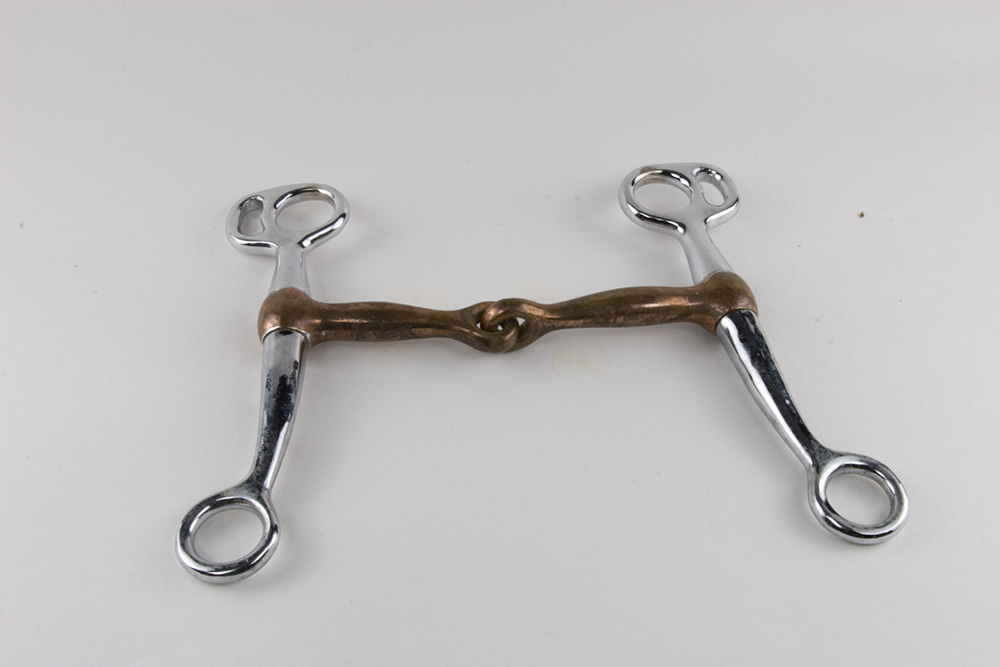
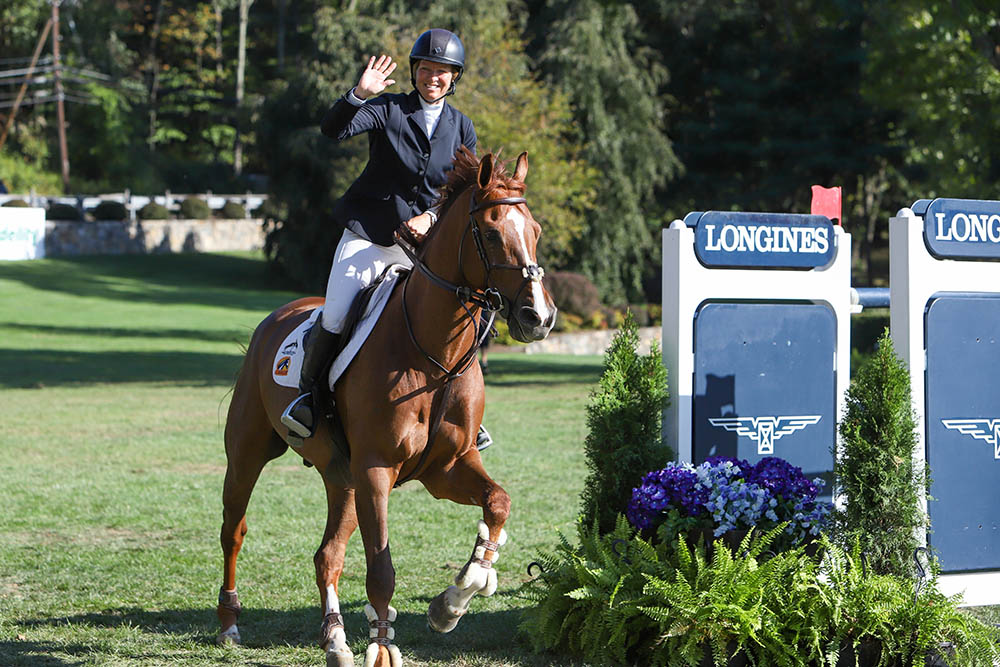
GAG BITS
Gag bits apply pressure to the poll and to the corner of the lips. The mouthpiece slides up either on a running rein or on the ring of the bit. This encourages the horse to put his head down. Gag bits tend to have good effect in slowing a horse but are not so good at turning the horse. I have used them to good effect with eventers and hunters. A gag bit can be set up with solid cheekpieces and a normal rein in addition to the running rein, so that it can act as a snaffle before the gag action kicks in. I prefer this set-up to a single rein as a skilled rider can choose when to use the snaffle action and when to apply pressure to the poll. Various mouthpieces are available, from flexible plastic, single and double joints, through to W mouthpieces. You can work out the severity of the mouthpiece just as for the snaffles.
Dutch gags allow the mouthpiece to slide on the ring, having a limited gag effect. The rein attaches to a ring for stability. There may be leverage to make the effect stronger.
Running gags give the opportunity for the most pressure to be applied to the poll. You can have a stopper on the running rein to prevent the mouthpiece getting too loose and low, or set to limit the amount of gag action. If the sliding gag rein is leather, it will slide more slowly than a thinner rope rein, so the leather will be less “sharp” than the rope.

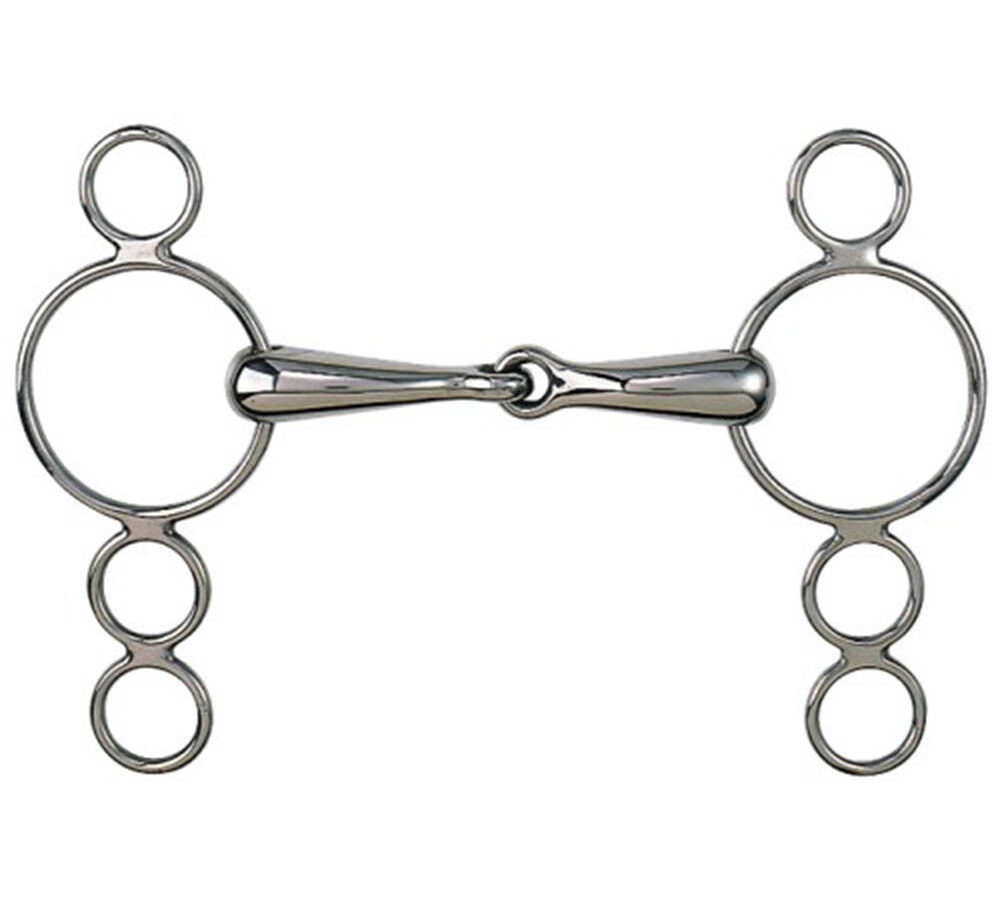
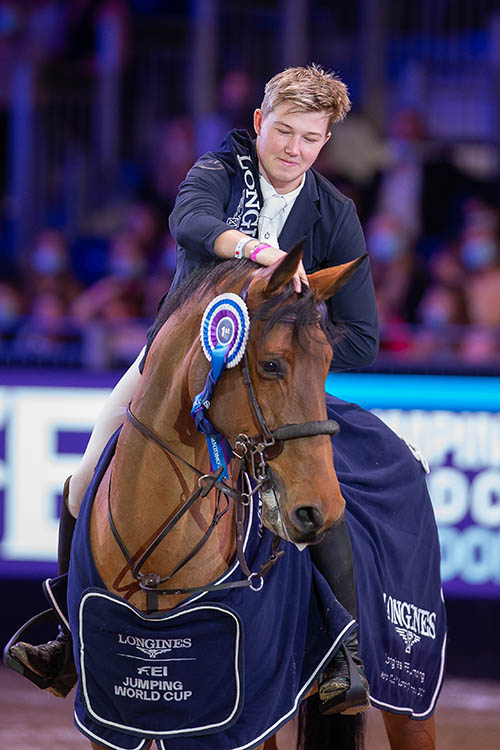
COMBINATION BITS
Combination bits are modern bits that combine various strategies to apply and release pressure. They may incorporate hackamore elements to put pressure on the nose, as well as incorporating gag, snaffle or curb elements. Although these bits can look ugly, they are not always severe as the pressure is generally distributed across several parts of the head. This contrasts, for example, with a thin, single joint snaffle where all the pressure from the hand is applied to the horse’s lips.
Nosebands can also have an effect on the response to the bit, including hackamores and bosals and other bitless bridles, which use the noseband as the primary means to apply pressure to the head, but I am not going to go in to detail about these.
The best bit is the one that fits your horse and that your horse is comfortable with and responsive to. Sometimes you might want to use a sharper bit for specific training, or for competition. We always start with a fat KK bit and change if it seems helpful. Jumpers have free choice of bits, but even within the limitations of the dressage rules there is a lot of difference you can make with skillful bit choice. It is usually trial and error to find out what your horse is happy in. However, understanding the basic principles outlined here can help you choose.
The most important thing that determines the severity of a bit is the skill of the rider and how the rider uses their hands. The effectiveness of the bit as a training tool is in the timing of the release, either by giving, or simply relaxing the fingers. Of course, generally try to use the gentlest bit that is effective for your horse. EQ
Have fun.
READ MORE BY DR KERRY MACK:
The Secret to ‘Soft Hands‘ – Equestrian Life, December 2021 issue
Ask Less, Reward More – Equestrian Life, October 2021 issue
So You Want To Go To The Games? – Equestrian Life, September 2021 issue
The Ins & Outs Of Bitless Bridles – Equestrian Life, July 2021 issue
Taking The Plunge With The Lunge – Equestrian Life, June 2021 issue
Dressage for Showjumpers – Equestrian Life, May 2021 issue
23 Shoulder-In Exercises to Improve Your Horse – Equestrian Life, April 2021 issue
Understanding Your Horse’s Inner Thoughts – Equestrian Life, March 2021 issue
Make the Most of Your Seniority – Equestrian Life, February 2021 issue
Building Better Relationships – Equestrian Life, January 2021 issue
Whipping Up Controversy – Equestrian Life, December 2020 issue
The Importance of a Trusting Relationship – Equestrian Life, November 2020 issue
Welcome to Kindergarten for Foals – Equestrian Life, October 2020 issue
The Carrot or the Liquorice? Positive Reinforcement – Equestrian Life, September 2020 issue
Submission or Stress? Something to Chew On – Equestrian Life, August 2020 issue
A Relaxed Horse is a Happy Horse – Equestrian Life, July 2020 issue
The Literate Horse Rider – Equestrian Life, June 2020 issue
Why Horses Love Ingrid Klimke – Equestrian Life, May 2020 issue



